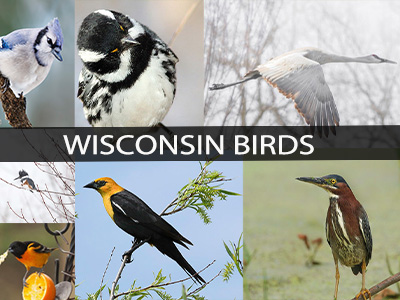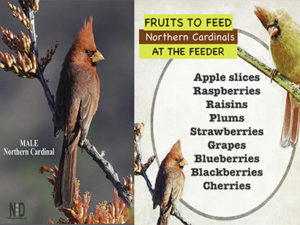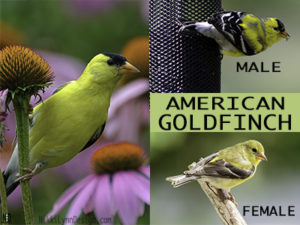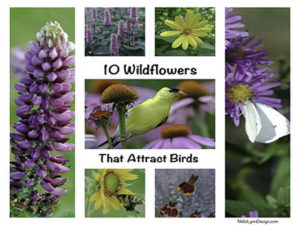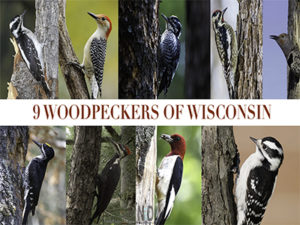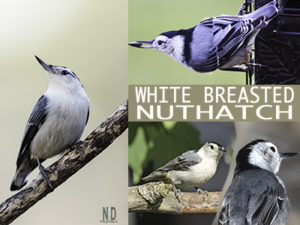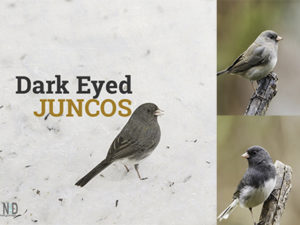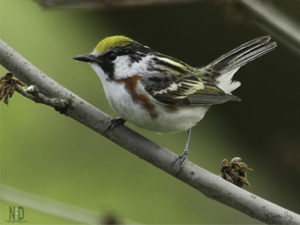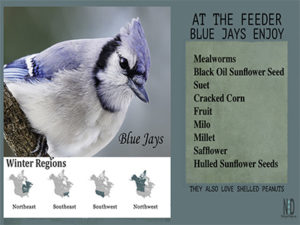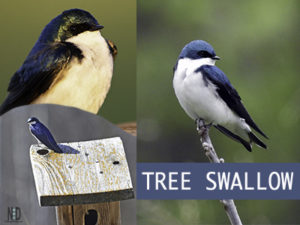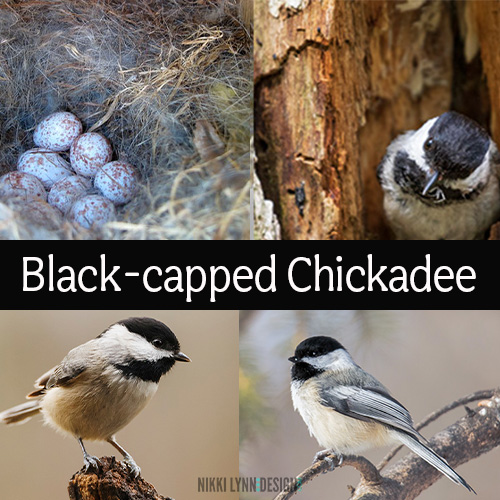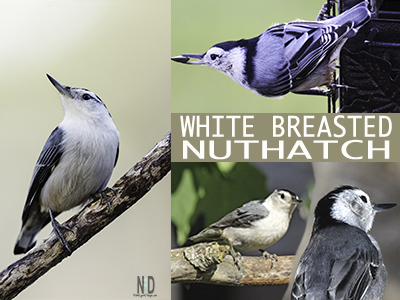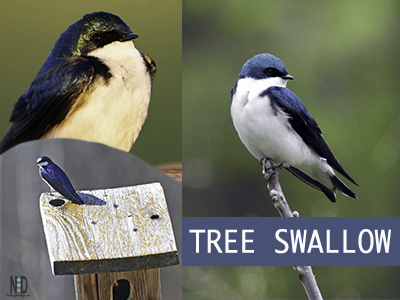Wisconsin Birds
This page will be a running list of all my small Wisconsin birds. The birds can be found in your yards, gardens and around the woodlands areas.
I will be using this page to post throughout the year – making it a running list of bird from around Wisconsin and the Midwest.
Blue Jay

The bullies of the bird feeder but I still love ’em anyway! Get to know these birds, if you do not already.
Getting the Goods

I love to watch them make a regular flight pattern in the morning to the peanut wreath that I hang outside on my deck while sitting at my kitchen table sipping my morning coffee.
Additional Post:
Interesting Facts About the Blue Jay
Yellowhead Blackbird

I have seen plenty of yellowhead blackbirds this year. They are very striking birds.
This Makes Me Look Really Scary

Black-crowned Night-Heron sitting on a dead tree with his wings out. Something behind him kept spooking him and he would fan out his wings at times. Could it be to warn off predators? Maybe, he was getting ready to fly? Either way, he ended up staying for a bit to check out the fishing.
Just Resting

Green herons have that beautiful chestnut chest with stripes.
Black Throated Gray Warbler

I fully understand how this warbler gets the black-throated part of its name, but where does the gray coloring come in? That part always confuses me.
Additional Posts:
Yellow Warbler Feeding Young
Male House Finch

House finches are rarely seen walking on the ground. They are known for their hopping abilities, they will place both feet together and hop from location to location. Although, you rarely see them on the ground.
The more carotenod rich food the male house finch eats the brighter red it will become.
Read all about the male house finch.
Visitor From Heaven

It is said when a red cardinal appears in your yard it is a visitor from heaven.

I certainly hope so, I’m missing a few of my loved ones lately.
Want to Learn More about cardinals? Read All About the Northern Cardinal
Female Song Sparrow

Maybe one of the most commonly known birds because of their sheer numbers. A beautiful singer and will visit home feeders.
That’s a Mouth Full
Eastern Phoebes are making their nests in early March and this one has a mouth full of mud. The post Eastern Phoebe in Wisconsin has a summary of this bird.
Light fog and a sandhill crane flying over the Fox River on The Fox River State Trail, make this the only photo obtained today. No complaints, it isn’t snowing.
The Sounds of Spring Are In The Air
Wishing I was not standing in the middle of the woods at this moment. I would have loved the chance to get a clear picture of the wealth of blackbirds that returned today.
Male Belted Kingfisher

This male Belted Kingfisher was just sitting over one of the little streams on my walk along Bairds Creek. I sat and watched him for some time hoping he was going to come back with a fresh catch. I think he was a little bummed out about the winter flurries coming down again, as I am.
No such luck with fishing pictures of the male Belted Kingfisher today, he just flew off after watching him for ten minutes.
Back Up To Normal Temperatures
Crack out the sweatshirts and put away the winter jackets. Only a week after our last major snowstorm, Wisconsin is seeing temperatures in the 50’s. Excellent birding weather.

Tomorrow, I am heading out to walk a few trails and visit the Bay Beach Wildlife Sanctuary to see what ducks, birds, and critters I run into.
Saying Goodbye Until Next Season
They usually hide in a well-hidden location on the ground or low in a shrub or tree. Soon we shall say goodbye to them, until late in autumn. They only visit for the winter months.

The dark-eyed juncos are still around on April 24th, 2018. I think even they are confused by our winter this year in Wisconsin.
Read Dark Eyed Junco Birds at Feeder if you wish to read additional information about the juncos.
April 11,2018, First Warbler in Wisconsin
It was a long, hard winter in Wisconsin and Mother Nature gave us her last hurrah, a whopping 24 inches of snow today.

Yesterday, I spotted my first Warbler of the season. Welcome back little one! I can’t wait for all your buddies to return!
Dark-Eyed Juncos Hanging Around

The Dark Eyed Junco usually forages on the ground, so they quickly made themselves at home next to some pine boughs I cut to take product photography pictures earlier in the week. In winter, Juncos often forage in flocks but I only had 5-6 at a time. They eat mainly insects and seeds.
Read Dark Eyed Junco Birds at Feeder from my gardening section of the site if you wish to read additional information about the juncos.
Chipping Sparrows

This chipping sparrow was very happy to find the seed I left out for him.
He was selectively picking out certain seeds from the snow and had some rather silly mannerisms.
The Robins Are Not Impressed

The American Robins are back and everything is covered in snow. They have been eating from my seed piles but tend to stick around the ice patches along my flower beds that surround the deck.
After I noticed that they didn’t care for my two beasts (dogs) slobbering up the windows and watching them eat, I sprinkled seed on the ice patches and they were happy to eat in peace.
Baltimore Oriole

Baltimore Oriole – (Icterus galbula) is a small icterid blackbird common in eastern North America as a migratory breeding bird. It received its name from the resemblance of the male’s colors to those on the coat-of-arms of Lord Baltimore. Find plenty of Baltimore Orioles on the UWGB campus walking trails every summer and along my berry trees that line the backyard.
Additional Posts:
All About the Oriole
Cedar Waxwing

The cedar waxwing eats berries and sugary fruit year-round, including “dogwood, serviceberry, cedar, juniper, hawthorn, and winterberry” with insects becoming an important part of the diet in the breeding season. Its fondness for the small cones of the eastern redcedar (a kind of juniper) gave this bird its common name. They eat berries whole. They sometimes fly over water to catch insects. Pictured is two cedar waxwings sharing a bug.
Eastern Bluebird
![Female Eastern Bluebird - Eastern bluebirds are found east of the Rockies, southern Canada to the Gulf states, and southeastern Arizona to Nicaragua. The increase in trees throughout the Great Plains during the past century due to fire suppression and tree planting facilitated the western range expansion of the eastern bluebird[5] as well as range expansions of many other species of birds. Female Eastern Bluebird - Eastern bluebirds are found east of the Rockies, southern Canada to the Gulf states, and southeastern Arizona to Nicaragua. The increase in trees throughout the Great Plains during the past century due to fire suppression and tree planting facilitated the western range expansion of the eastern bluebird[5] as well as range expansions of many other species of birds.](https://photos.smugmug.com/Wildlife-Collection/Smallbirds1/Small-Birds-Wi/Small-Birds/i-S8kNzvS/20/91a3be80/L/birds2-L.jpg)
Female Eastern Bluebird – Eastern bluebirds are found east of the Rockies, southern Canada to the Gulf states, and southeastern Arizona to Nicaragua. The increase in trees throughout the Great Plains during the past century due to fire suppression and tree planting facilitated the western range expansion of the eastern bluebird as well as the range expansions of many other species of birds.
Male Red-bellied Woodpecker
The red-bellied woodpecker is a medium-sized woodpecker of the Picidae family. It breeds mainly in the eastern United States, ranging as far south as Florida and as far north as Canada. Its common name is somewhat misleading, as the most prominent red part of its plumage is on the head.
Female Red-bellied Woodpecker
As with all animals, foraging becomes an important role in an animal’s ability to survive and reproduce. The red-bellied woodpecker expresses foraging behavior by catching or storing food. The woodpecker uses its bill for foraging as a chisel drilling into bark or probing cracks on the trunk of trees. In this manner, the red-bellied woodpecker can pull out beetles and other insects from the tree with the help of its long tongue.
Downy Woodpecker
Downy woodpeckers are the smallest of North America’s woodpeckers but there are many smaller species elsewhere, especially the piculets. The total length of the species ranges from 14 to 18 cm (5.5 to 7.1 in) and the wingspan from 25 to 31 cm (9.8 to 12.2 in). They love to eat suet from feeders in the winter. This little guy is currently winter feeding – eating my homemade suet. Enjoy little guy!
Red Bellied Woodpecker

Red-bellied woodpeckers LOVE peanuts. I attract them in winter by adding unshelled peanuts to the feeders. I enjoy watching them take peanuts, one by one. They are interesting to watch.
Hummingbird

They are known as hummingbirds because of the humming sound created by their beating wings which flap at high frequencies audible to humans. They hover in mid-air at rapid wing-flapping rates, typically around 50 times per second, allowing them also to fly at speeds exceeding 15 m/s (54 km/h; 34 mph).

Pine Warbler
Guess where he was found. In a pine tree, imagine that. lol
Additional Warbler Posts:
Warbler Season in Wisconsin
Yellow Warbler Feeding Young Video
Gotta Catch “Em All
Chestnut Sided Warbler

It took me three years to find one in the spring – but I did it. Then, of course, you end up seeing them all summer after that. What a beautiful and quick-moving bird.
Acadian Flycatcher

Well, for sure it is a flycatcher. I am thinking it is the Acadian? The flycatcher family is a tough nut to crack.
Northern Flicker

Northern flickers generally eat insects, seeds, and berries. During the winter months I find them eating hulled sunflower seeds, berries, and suet from my feeders.
Red-Winged Blackbird

This guy was sassy! He tried to pull my hair tie out of my hair when I was photographing butterflies. He thought he had a better use for it.
Red Eyed Vireo

The red-eyed vireo is a small songbird. Adults are mainly olive-green on the upper parts with white underparts; they have a red iris and a grey crown edged with black.

There is a dark blackish line through the eyes and a wide white stripe just above that line. They have thick blue-grey legs and a stout bill.

The red-eyed vireo is interested in picking insects off the undersides of your leaves and flowers.
You will not find them at the feeders but might hear their beautiful song and quick motion when visiting tree to tree.
Occasionally, you will find them sitting on a heavy stemmed flower in your gardens.
Goldcrest

Goldcrest – This kinglet has greenish upper-parts, whitish underparts, and has two white wing bars. It has a plain face contrasting black irises and a bright head crest, orange and yellow in the male and yellow in the female, which is displayed during breeding. The goldcrest breeds in coniferous woodland and gardens, building its compact, three-layered nest on a tree branch.
Blue Jay

Young Blue Jay – Blue jays are predominantly blue with a white chest and underparts, and a blue crest. It has a black, U-shaped collar around its neck and a black border behind the crest. Sexes are similar in size and plumage, and plumage does not vary from season to season.
Additional Posts That May Interest You:
All About the Blue Jay
Sound of a Blue Jay Video
Lesser Redpoll

Another fun feeder bird to watch. Around me, the redpoll birds attack the feeder in groups. Look for a fire engine red-colored patch on top of the head and sometimes belly on the redpolls.
Warbling Vireo

Warbling vireos forage for insects in trees, hopping along branches and sometimes hovering. They also eat berries, especially before migration and in winter quarters, where they are – like other vireos – quite fond of gumbo-limbo seeds. However they will not venture into human-modified habitat to get them. I haven’t seen one at a feeder, yet. Although, I do see them pass through the yard.
Tufted TitMouse

The habitat for the tufted titmouse is deciduous and mixed woods as well as gardens, parks, and shrubland in the eastern United States; they barely range into southeastern Canada in the Great Lakes region. They are all-year residents in the area effectively circumscribed by the Great Plains, the Great Lakes, the Gulf of Mexico, and the Atlantic Ocean. The range is expanding northwards, possibly due to the increased availability of winter food at bird feeders.
Male American Goldfinch
Pictured is the male American goldfinch. It is a common feeder bird that enjoys eating sunflower and nyjer seed. During the late summer and fall, they enjoy eating the seeds of garden plants. The American Finch, Common Redpolls, and Pine Siskins normally pack together for the winter months. The coloring of the American Goldfinch is a bright yellow during the spring and dulls, going into winter.
Female American Goldfinch

The female American Goldfinch is a dull yellow-brown year round and only brightens a tad during the summer months. All finches love to eat seed heads of flowers and plants. You can see the birds in large flocks while eating and migrating. Loves open meadows and will visit bird feeders.
Cooper’s Hawk
The backyard feeder birds are an easy target for hawks, they will stand back and watch the songbirds eat their fill and then strike them in flight as they leave.
Male Common House Finch
The house sparrow is strongly associated with human habitations and can live in urban or rural settings. Though found in widely varied habitats and climates, it typically avoids extensive woodlands, grasslands, and deserts away from human development. It feeds mostly on the seeds of grains and weeds, but it is an opportunistic eater and commonly eats insects and many other foods.
Buy On Amazon:
Backyard Guide to the Birds of North America
The Backyard Birdsong Guide Eastern and Central North America: A Guide to Listening
Audubon Bird Call – Chirps and twitters to imitate bird calls
Grey Catbird
This species is named for its cat-like call. Like many members of the Mimidae (most famously mockingbirds), it also mimics the songs of other birds, as well as those of Hylidae (tree frogs), and even mechanical sounds. Because of its well-developed songbird syrinx, it is able to make two sounds at the same time. The alarm call resembles the quiet calls of a male mallard. The catbird can also make a terrible-sounding scream when you are close. They scare the crud out of me at times. Never heard of one? Here is a video/audio I took.
The birds will stay over winter if they have a well-stocked feeder with plenty of berries and seeds.
The grackle looks black from a distance. Until you get up close and see the glossy-iridescent body. I think they are rather pretty but they can be bullies and travel in packs, cleaning out feeders in an instant.
If you have issues with them, hang the tube feeder with Nyjer seed and feed safflower seed in hoppers. Crows, grackle, and squirrels dislike safflower seed.
Marsh Wren With Moth

The morning breakfast for this marsh wren is a juicy moth.
Female Rose Breasted Grosbeak

Grosbeaks, in general, eat the same food. Like visiting yards that have nut and berry trees planted on the grounds and for foraging for insects in and around the yard and gardens.
At feeders, they enjoy eating sunflower and safflower seed and raw peanuts. Once in a while, they will take a nip at the suet. Some people have had better luck than I at having grosbeaks eat their fill of suet.
Male Rose Breasted Grosbeak
The rose-breasted grosbeak (Pheucticus ludovicianus) is a large seed-eating grosbeak in the cardinal family (Cardinalidae). It is primarily a foliage gleaner. It breeds in cool-temperate North America, migrating to tropical America in winter.
Common Grackle

The common grackle is a large icterid that is found in large numbers throughout much of North America. You can see in the picture above, most of the time they look almost black in shade. In the full sunlight, they are beautiful birds.
Baltimore Orioles love oranges and they are fun to watch eating them! See
